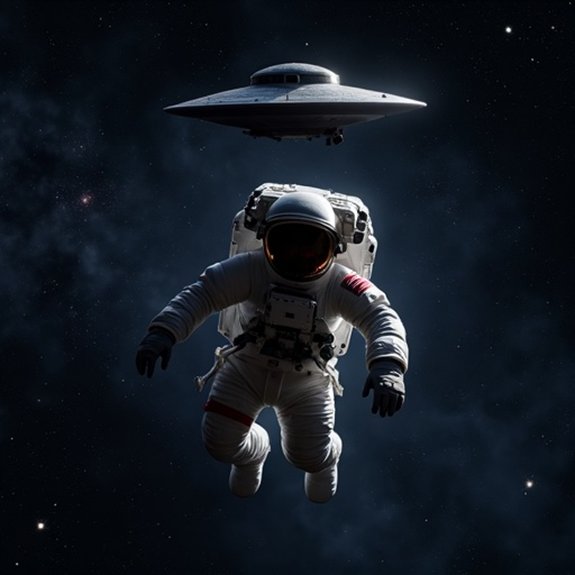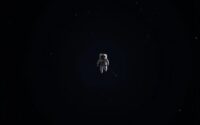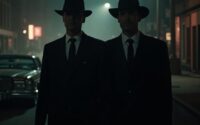Astronaut UFO Sightings: From Gemini to ISS
Space agencies have documented hundreds of unexplained sightings by astronauts since the 1960s. While NASA’s official stance remains skeptical, veteran astronauts like Gordon Cooper and James McDivitt captured evidence that’s defied conventional explanation. These encounters aren’t limited to American missions—Soviet cosmonauts reported similar phenomena that their agencies couldn’t dismiss as debris or reflections. What they’ve witnessed challenges our understanding of what exists beyond Earth’s atmosphere.
Introduction

While modern technology has given humanity unprecedented views of Earth from space, it’s also produced some of the most puzzling UFO reports in history. Since the early days of the Gemini program in the 1960s, astronauts have documented strange objects, unexplained lights, and anomalous phenomena during their missions. These accounts aren’t from amateur skygazchers but from highly trained pilots and scientists operating sophisticated equipment above Earth’s atmosphere.
NASA’s official records contain dozens of incidents where crew members observed objects they couldn’t identify. From James McDivitt’s 1965 encounter to recent International Space Station footage, these sightings have sparked intense debate. While skeptics attribute most cases to space debris, ice crystals, or optical illusions, some incidents remain unexplained despite thorough investigation.
Soviet Space Program Encounters
Although the Soviet space program operated under strict secrecy during the Cold War, declassified documents and cosmonaut testimonies have revealed numerous UFO encounters that parallel American experiences. In 1981, cosmonaut Vladimir Kovalyonok observed an orbital object from Salyut 6 that pulsated and changed shape before exploding into golden fragments. Pavel Popovich reported seeing triangular formations of lights during his Vostok 4 mission in 1962.
The Phobos 2 probe’s mysterious failure in 1989 sparked theories after it transmitted images of an elliptical shadow on Mars’s moon. Cosmonauts aboard Mir station documented multiple incidents, including fast-moving objects that couldn’t be explained as debris or satellites. These accounts remained classified until the 1990s, when Russia’s space agency began releasing archives that corroborated Western astronaut reports.
Notable Cases or Sightings

The Gordon Cooper sightings stand out as some of the most credible astronaut UFO encounters due to his extensive documentation and unwavering testimony until his death in 2004. Cooper reported seeing formations of metallic discs flying over Germany in 1951 and later witnessed a UFO landing at Edwards Air Force Base in 1957, which his crew filmed before the footage mysteriously disappeared.
James McDivitt’s 1965 Gemini 4 observation remains unexplained. He photographed a cylindrical object with protruding arms that NASA couldn’t identify. Buzz Aldrin’s Apollo 11 sighting of an L-shaped object traveling alongside their spacecraft sparked decades of speculation. While Aldrin later suggested it was likely a panel from their rocket, the initial confusion highlighted how space’s unfamiliar environment can challenge even experienced astronauts’ perceptions.
Common Theories or Explanations
Since astronauts receive extensive training in identifying conventional objects and phenomena, their UFO sightings have prompted scientists to develop several competing explanations. Space debris remains the leading theory, as thousands of defunct satellites, spent rocket stages, and metal fragments orbit Earth at various altitudes. Ice crystals from spacecraft waste systems can create bright, moving objects when they catch sunlight. Optical illusions caused by Earth’s atmosphere, particularly during sunrise and sunset changes every 90 minutes, can distort familiar objects.
Some researchers suggest psychological factors like isolation and sensory deprivation might influence perception. Others point to classified military satellites or experimental aircraft. NASA typically attributes sightings to mundane causes, though they’ve acknowledged that some incidents lack definitive explanations despite thorough investigation.
Frequently Asked Questions
Are Astronauts Required to Report UFO Sightings to Specific Government Agencies?
Yes, astronauts must report unexplained aerial phenomena to NASA and relevant authorities. They’re trained to document unusual sightings through official channels, following established protocols that guarantee proper investigation and classification of any anomalous observations.
Have Any Astronauts Faced Career Consequences for Publicly Discussing Their UFO Encounters?
No astronaut’s faced documented career consequences for discussing UFO encounters. Gordon Cooper and Edgar Mitchell spoke openly about their experiences after retiring. NASA hasn’t punished active astronauts who’ve reported unexplained sightings during missions.
What Protocols Do Space Agencies Follow When Astronauts Report Unexplained Phenomena?
Space agencies document astronauts’ reports through debriefing sessions, analyze telemetry data, review footage when available, and classify observations as debris, atmospheric phenomena, or unexplained. They’ll investigate potential safety hazards while maintaining operational security protocols.
Has NASA Released All Classified Documents Related to Astronaut UFO Sightings?
NASA hasn’t released all classified documents about astronaut UFO sightings. They’ve declassified many historical records through FOIA requests, but some materials remain restricted for national security reasons or haven’t been formally processed for public release.
Do Astronauts Receive Training on How to Handle Potential UFO Encounters?
NASA doesn’t publicly confirm specific UFO encounter training for astronauts. They’re trained to identify and report anomalous objects as part of standard procedures, focusing on spacecraft safety and documenting unexpected phenomena during missions.


